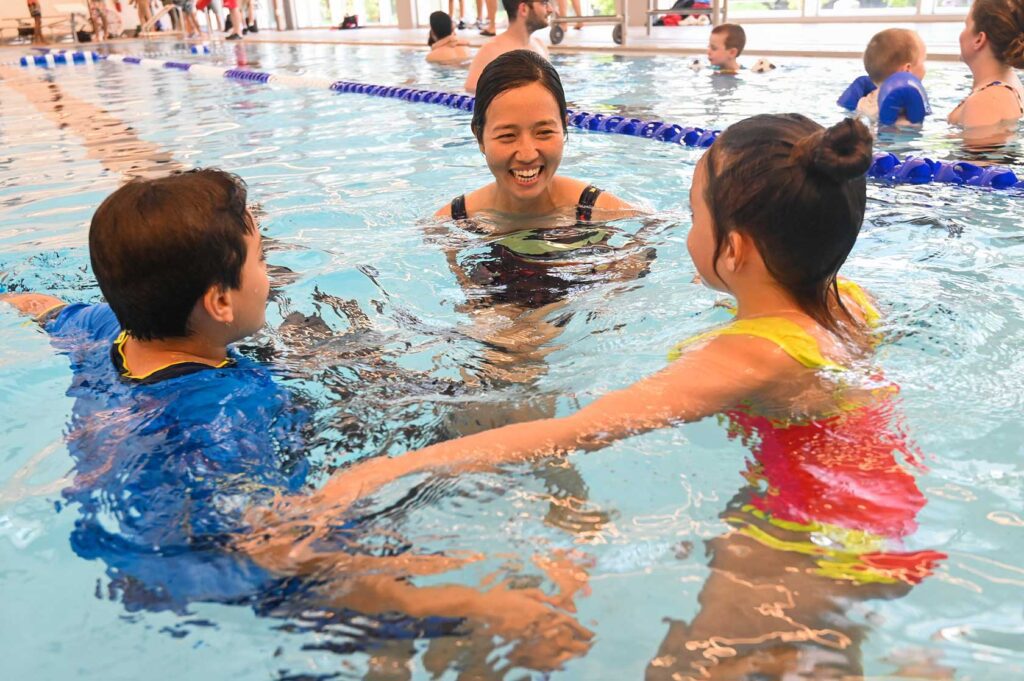
Richard Mojica, the aquatics director at the Boys and Girls Clubs of Boston’s Berkshire Partners Blue Hills Club, has seen a rising demand for swim lessons since the city announced last week a new free water safety initiative.
Parents in the Black community have been calling to sign up their children to learn to float, swim freestyle, and do the backstroke — all while trying to stay safe in the water.
“Safety and prevention are the main intent behind [this] initiative, especially in the summer,’’ Mojica said in an interview. “A lot of kids want to swim, and they don’t have access to the pool.”
Mayor Michelle Wu announced the free swim lessons for children ages 3 to 12 beginning this summer as part of the city’s Swim Safe Boston initiative.
The goal is to not only teach children to enjoy the water, but also reduce racial disparities in aquatic safety knowledge.
The city has partnered with the Boys and Girls Clubs of Boston and the YMCA of Greater Boston, both of which will provide free lessons in their pools in Dorchester, Roxbury and other areas.
“Every child growing up in Boston should learn how to swim, for life safety, health and fun!” Wu said in a press release. “By investing in our public facilities and making swim lessons affordable and accessible citywide, we are making Boston a more family-friendly, enjoyable place to live.”
In announcing the initiative, Wu also joined some of the children in the BCYF Paris Street Pool in East Boston.
As part of its effort, the city will give out 1,000 free flotation devices to parents of young children who visit the city’s beaches and provide incentives to encourage more people to become lifeguards. That includes offering lifeguards $22 per hour, signing and retention bonuses and part-time positions.
José F. Massó, the city’s chief of human services, said the initiative aims to break down generational barriers that have prohibited Black and brown children from being able to learn how to swim.
“Being in a coastal city like Boston, we want to make sure that we’re able to enhance opportunities for young people to be able to fully enjoy everything that the city has to offer,’’ Massó said in an interview.
Drowning is the leading cause of death for children ages 1 to 4, according to the Centers for Disease Control and Prevention, and every year there are 4,000 fatal unintentional drownings in the United States.
But the more shocking statistic is that the fatal-drowning rate of Black children is three times higher than white children.
The USA Swimming Foundation reports that 64% of Black children have little to no ability to swim, compared to only 40% of white children. This is due to a variety of factors, such as accessibility and proximity to a pool and the cost of swimming lessons.
In addition, there has been a long history of racial inequality when it comes to aquatic safety.
During the time of Jim Crow laws, many Black people were prevented from swimming in the same public pools as white residents, and that has had a lasting legacy, said Gary Bailey, an assistant dean in the College of Social Sciences, Policy and Practice at Simmons University.
Bailey told the Banner that historically, public pools were intentionally placed in areas with low populations of Black and brown people.
“Black and brown people weren’t allowed in pools that white people used. It was illegal. So people didn’t learn to swim,” he said, referring to a legacy that has been passed down generations.
“Not having access to swimming pools in communities for generations has put Black and brown folks at risk,’’ he added, “and we have a much higher drowning rate than other segments of the population as a result.”
Massó said that when parents express a fear of water, that fear is often passed down to their children.
“If … parents or caregivers have a negative experience either in or around water, that typically prohibits children from participating in any type of aquatics programming or anything else like that,” he said.
The USA Swimming Foundation found that there is only a 13% chance a child will swim if their parent does not know how to swim.
The cost of swim lessons, sometimes upwards of $70, can be a barrier for modern-day swimmers who want to develop their swimming skills.
“A lot of people invest in things they feel are important at the time,’’ said Mojica, the aquatics director. “Some people are faced with the option to either pay for rent or gas versus learning how to swim.”
The Swim Safe Boston program ends Sept. 3.






